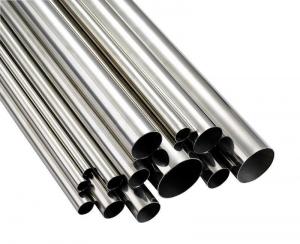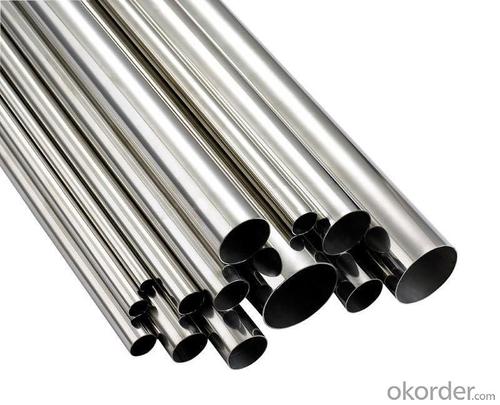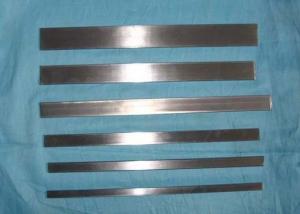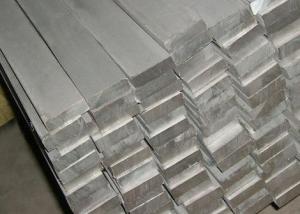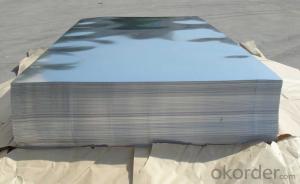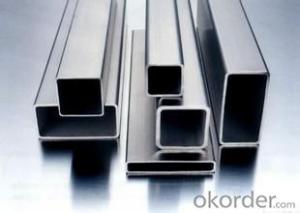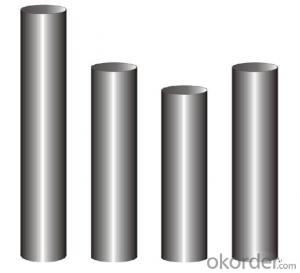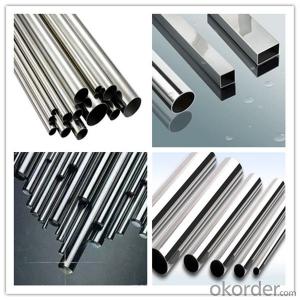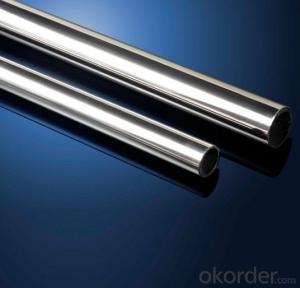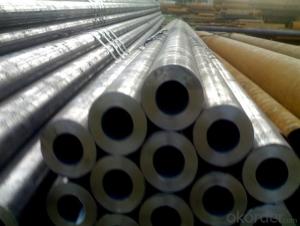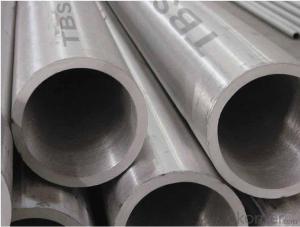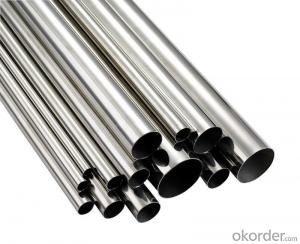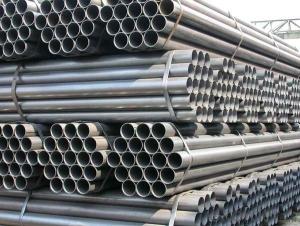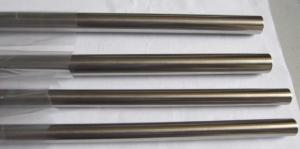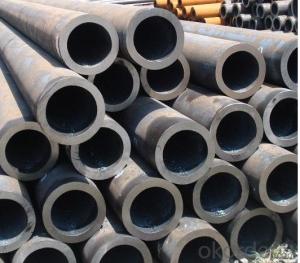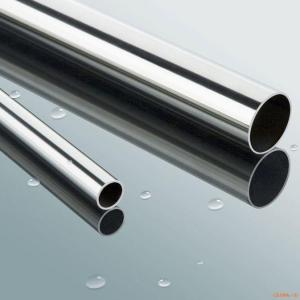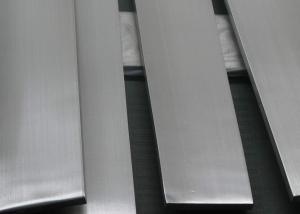Seamless Ferritic Alloy-Steel Pipe for High-Temperature Service in 2015
- Loading Port:
- Shanghai
- Payment Terms:
- TT OR LC
- Min Order Qty:
- 5000 kg
- Supply Capability:
- 10000 kg/month
OKorder Service Pledge
OKorder Financial Service
You Might Also Like
Description:
(1) nominal wall and minimum wall seamless ferritic alloy-steel pipe intended for high-temperature service. Pipe ordered to this specification shall be suitable for bending, flanging (vanstoning), and similar forming operations, and for fusion welding.
(2)Each length of pipe is subjected to the hydrostatic test and examined by a non-destructive examination method in accordance to the required practices. The range of pipe sizes that may be examined by each method is subjected to the limitations in the scope of the respective practices. The different mechanical test requirements for pipes has been passed.
(3)Ferritic steels are defined as low- and intermediate-alloy steels containing up to and including 10 % chromium.
ASTM A335 Seamless Alloy-Steel Pipe
Standard: BS 1139, BS 3059-2, JIS G3454-2007
Grade: 10#-45#, 15NiCuMoNb5, 10Cr9Mo1VNb
Detailed introduction to ASTM A335 seamless alloy steel pipe:
ASTM A335 seamless alloy steel pipe
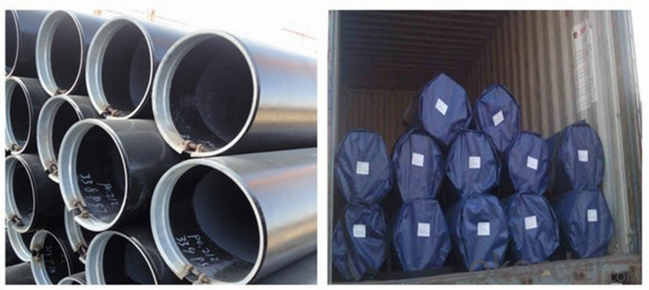
Packaging Detail: | Bundle or Container or as per customers requirement. |
Delivery Detail: | within 25 days after we receive an irrevocable L/Cor 30% deposit |
ASTM A335 Seamless Alloy-Steel Pipe
Standard: BS 1139, BS 3059-2, JIS G3454-2007
Grade: 10#-45#, 15NiCuMoNb5, 10Cr9Mo1VNb
Detailed introduction to ASTM A335 seamless alloy steel pipe:
ASTM A335 seamless alloy steel pipe

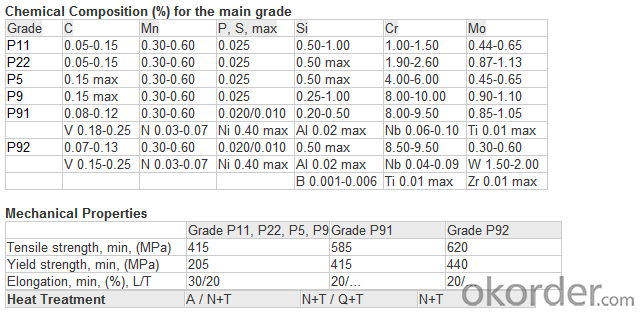
FAQ:
1) why you chose us ?
Professional Manufacturer and supplier of Steel pipe
More than 14 years’ professional producing experience
We can get the lowest ex-factory prices. The price are quite reasonable and it is lower than our commercial peers. also, we can guarantee the qualities of our products.
BV, ISO certificates and SGS test can be provided to assure the quality of our products.
2) Our minimum order quantity:
10 Metric Tons or one 20ft or 40ft Container.
3) How about the Delivery Time?
The steel pipe will be produced since we getting your deposit by T/T or Your original L/C. For normal size, some stocks in our factory now, we can supply once you need.
4)What kind of payment does your company support?
T/T, 100% L/C at sight, Cash, Western Union are all accepted.
5) Do you charge for the samples?
According to our company principle, we just charge for samples, you pay for the freight /courier charge.
6) Main market:
Mid East, South America, Africa, Southeast Asia, India etc
FAQ:
1) why you chose us ?
Professional Manufacturer and supplier of Steel pipe
More than 14 years’ professional producing experience
We can get the lowest ex-factory prices. The price are quite reasonable and it is lower than our commercial peers. also, we can guarantee the qualities of our products.
BV, ISO certificates and SGS test can be provided to assure the quality of our products.
2) Our minimum order quantity:
10 Metric Tons or one 20ft or 40ft Container.
3) How about the Delivery Time?
The steel pipe will be produced since we getting your deposit by T/T or Your original L/C. For normal size, some stocks in our factory now, we can supply once you need.
4)What kind of payment does your company support?
T/T, 100% L/C at sight, Cash, Western Union are all accepted.
5) Do you charge for the samples?
According to our company principle, we just charge for samples, you pay for the freight /courier charge.
6) Main market:
Mid East, South America, Africa, Southeast Asia, India etc
- Q: How do you prevent galvanic corrosion in stainless steel pipes?
- To prevent galvanic corrosion in stainless steel pipes, there are several measures that can be taken: 1. Use compatible materials: It is crucial to ensure that the materials used in the vicinity of stainless steel pipes are compatible to prevent galvanic corrosion. Avoid using dissimilar metals such as carbon steel, copper, or aluminum in direct contact with the stainless steel pipes. 2. Insulate dissimilar metals: If it is necessary to have dissimilar metals in close proximity to stainless steel pipes, electrical insulation can be employed. By isolating the metals electrically, the flow of electric current and subsequent galvanic corrosion can be minimized. 3. Apply protective coatings: Applying protective coatings, such as paint or epoxy, to the external surface of stainless steel pipes can act as a barrier against galvanic corrosion. These coatings prevent direct contact between the stainless steel and other metals that may cause galvanic reactions. 4. Use dielectric unions: When connecting stainless steel pipes to dissimilar metals, dielectric unions can be used to separate the metals and prevent galvanic corrosion. These unions incorporate insulating materials like plastic or rubber to prevent direct contact between the metals. 5. Implement cathodic protection: Cathodic protection is an effective method to prevent galvanic corrosion in stainless steel pipes. By introducing a sacrificial anode, such as zinc or magnesium, to the system, the anode corrodes instead of the stainless steel. This sacrificial anode can be periodically replaced to ensure continuous protection. 6. Install corrosion-resistant alloys: If the application allows, using corrosion-resistant alloys, such as duplex stainless steel or titanium, can provide enhanced protection against galvanic corrosion. These alloys have better resistance to galvanic reactions and are less prone to corrosion in various environments. Overall, a combination of these preventive measures can significantly reduce the risk of galvanic corrosion in stainless steel pipes, ensuring their longevity and performance. It is important to evaluate the specific application and environment to determine the most suitable preventive measures to be implemented.
- Q: Are stainless steel pipes suitable for heat exchangers?
- Yes, stainless steel pipes are suitable for heat exchangers. Stainless steel is known for its excellent heat resistance properties, making it an ideal choice for applications involving high temperatures. It can withstand extreme heat without deforming or losing its structural integrity. Additionally, stainless steel is highly corrosion-resistant, which is crucial for heat exchangers as they are often exposed to corrosive fluids or environments. The corrosion resistance ensures the longevity and reliability of the heat exchanger, reducing the risk of leaks or failures. Stainless steel pipes also offer excellent thermal conductivity, allowing for efficient heat transfer between the fluids in the exchanger. Overall, stainless steel pipes are widely used in heat exchangers due to their durability, corrosion resistance, and ability to withstand high temperatures.
- Q: Are stainless steel pipes suitable for fire protection systems?
- Indeed, fire protection systems find stainless steel pipes to be a suitable option. The reason lies in the fact that stainless steel possesses remarkable resistance against corrosion, a trait of utmost importance for fire protection systems, which frequently encounter water or other corrosive substances. The ability of stainless steel pipes to endure high temperatures while preserving their structural integrity enhances their dependability for the transportation of water or other fire suppressants. Furthermore, the durability and extended lifespan of stainless steel pipes contribute to a decrease in the necessity for frequent replacements or repairs. All in all, stainless steel pipes are widely favored in fire protection systems due to their reliability, resistance to corrosion, and durability.
- Q: What is the difference between seamless and seamless redrawn stainless steel pipes?
- The main difference between seamless and seamless redrawn stainless steel pipes lies in their manufacturing processes. Seamless stainless steel pipes are produced from solid billets without any seams or welded joints, resulting in a smooth and continuous pipe. On the other hand, seamless redrawn stainless steel pipes are initially produced through the seamless process, but then they undergo additional drawing or resizing processes to achieve more precise dimensions, smoothness, and improved surface finish. Overall, seamless redrawn stainless steel pipes offer enhanced precision and surface quality compared to standard seamless pipes.
- Q: What is the difference between 304J3 and 316J3 stainless steel pipes?
- The main difference between 304J3 and 316J3 stainless steel pipes is their composition and corrosion resistance. 304J3 stainless steel contains a higher percentage of chromium and nickel, making it more resistant to corrosion in various environments. On the other hand, 316J3 stainless steel contains molybdenum in addition to chromium and nickel, providing even greater resistance to corrosion, especially in chloride-rich environments. Therefore, while both are suitable for general applications, 316J3 stainless steel pipes are ideal for more demanding and corrosive conditions.
- Q: What are the limitations of using stainless steel pipes?
- The utilization of stainless steel pipes is associated with several limitations. To begin with, stainless steel pipes are inclined to be pricier in comparison to materials like PVC or copper. This aspect can render them less viable for projects with financial constraints. Moreover, the installation of stainless steel pipes can be more challenging and necessitate the use of specialized tools and equipment. Consequently, this can lead to an increase in both the overall installation time and cost. Another constraint is that stainless steel pipes are unsuitable for the transportation of certain corrosive chemicals or gases. There is a possibility of a chemical reaction occurring with certain substances, resulting in corrosion and potential harm to the pipes. In such scenarios, alternative materials such as plastic or lined pipes may be more suitable. Additionally, stainless steel pipes may possess limitations in terms of their resistance to temperature and pressure. Although they can withstand relatively high temperatures and pressures, extreme conditions may require the utilization of more robust materials. Furthermore, stainless steel pipes exhibit lower thermal conductivity compared to other materials, implying that they are not as efficient in transferring heat. This can be a limitation in certain heating or cooling applications that require rapid heat transfer. Lastly, stainless steel pipes are susceptible to expansion and contraction with changes in temperature. Consequently, the use of expansion joints or other measures may be necessary to accommodate these movements and avoid potential damage. In conclusion, although stainless steel pipes offer numerous advantages such as durability and resistance to corrosion, it is crucial to carefully consider their limitations before selecting them for a specific project.
- Q: Are stainless steel pipes suitable for brewery fermentation tanks?
- Yes, stainless steel pipes are suitable for brewery fermentation tanks. Stainless steel has several properties that make it ideal for use in the brewing industry. Firstly, stainless steel is resistant to corrosion, which is crucial in a brewery environment where the tanks are exposed to liquids such as beer and cleaning chemicals. This resistance to corrosion ensures that the pipes will not rust or contaminate the beer during the fermentation process. Additionally, stainless steel is a hygienic material that can be easily cleaned and sanitized, making it perfect for use in the brewing industry where cleanliness is of utmost importance. The smooth surface of stainless steel pipes also prevents the growth of bacteria and other microorganisms, further ensuring the quality and safety of the beer. Furthermore, stainless steel pipes have excellent heat resistance, allowing them to withstand high temperatures during the brewing process without warping or deforming. This durability and heat resistance make stainless steel pipes suitable for use in the fermentation tanks, where the beer is subjected to specific temperature conditions. Overall, stainless steel pipes provide the necessary durability, corrosion resistance, cleanliness, and heat resistance required for brewery fermentation tanks. They are a reliable and suitable choice for maintaining the quality and integrity of the beer during the fermentation process.
- Q: What is the difference between 17-4 and 316 stainless steel pipes?
- The main difference between 17-4 and 316 stainless steel pipes lies in their composition and properties. 17-4 stainless steel is a precipitation-hardening stainless steel that contains 17% chromium, 4% nickel, and 4% copper. It is known for its high strength, excellent corrosion resistance, and good toughness. This type of stainless steel is commonly used in applications that require high strength and resistance to wear and corrosion, such as aerospace components, industrial equipment, and oil and gas applications. On the other hand, 316 stainless steel is an austenitic stainless steel that contains 16-18% chromium, 10-14% nickel, and 2-3% molybdenum. It is highly corrosion-resistant and has good heat resistance. 316 stainless steel pipes are widely used in industries that require resistance to chemicals, saltwater, and various corrosive environments, such as marine applications, chemical processing, and pharmaceutical equipment. In summary, while both 17-4 and 316 stainless steel pipes offer corrosion resistance, 17-4 is known for its high strength and toughness, making it suitable for demanding applications, whereas 316 stainless steel is preferred for its exceptional corrosion resistance, particularly in harsh environments.
- Q: What kind of welding machine is used for welding thin stainless steel plate and stainless steel square tube?
- 1 mm thick enough, basically argon arc welding machine can, 0.2 thick stainless steel plate welding is not good ah, how have three or four points it can be positive or negative, only a few joints only, mainly to see the technology myself you, not what, the polishing wheel is on the line let's do it, you can buy a good quality of argon arc welding machine, the high price of the arc is stable
- Q: What is the difference between seamless and cold-drawn stainless steel pipes?
- Seamless and cold-drawn stainless steel pipes are two different types of stainless steel pipes that vary in their manufacturing processes and properties. Seamless stainless steel pipes are manufactured without any welding or seams. They are made by piercing a solid cylindrical billet or ingot of stainless steel and then rolling it into a hollow tube shape. This seamless manufacturing process ensures that there are no weak points or areas prone to leakage, making seamless pipes highly durable and reliable. They also have a smoother interior surface, which allows for efficient fluid flow and reduces the risk of corrosion. On the other hand, cold-drawn stainless steel pipes are manufactured by pulling or drawing a solid stainless steel billet through a series of dies at room temperature. This process helps in achieving precise dimensions and a smooth surface finish. Cold-drawn pipes are typically used in applications where tight tolerances and a high-quality surface finish are required. They are known for their superior dimensional accuracy, excellent surface finish, and increased strength. In terms of properties, seamless stainless steel pipes offer better resistance to corrosion, higher strength, and increased pressure rating compared to cold-drawn pipes. The absence of welds also makes seamless pipes less prone to cracking or failure under high-pressure environments. On the other hand, cold-drawn stainless steel pipes are known for their excellent surface finish, close dimensional tolerances, and improved mechanical properties, making them suitable for applications that require precise measurements and a smooth appearance. In summary, the main difference between seamless and cold-drawn stainless steel pipes lies in their manufacturing processes, resulting properties, and applications. Seamless pipes are manufactured without any welding or seams, offering better resistance to corrosion and higher strength, while cold-drawn pipes are made by pulling solid stainless steel through dies, providing excellent surface finish, dimensional accuracy, and improved mechanical properties.
Send your message to us
Seamless Ferritic Alloy-Steel Pipe for High-Temperature Service in 2015
- Loading Port:
- Shanghai
- Payment Terms:
- TT OR LC
- Min Order Qty:
- 5000 kg
- Supply Capability:
- 10000 kg/month
OKorder Service Pledge
OKorder Financial Service
Similar products
Hot products
Hot Searches
Related keywords
